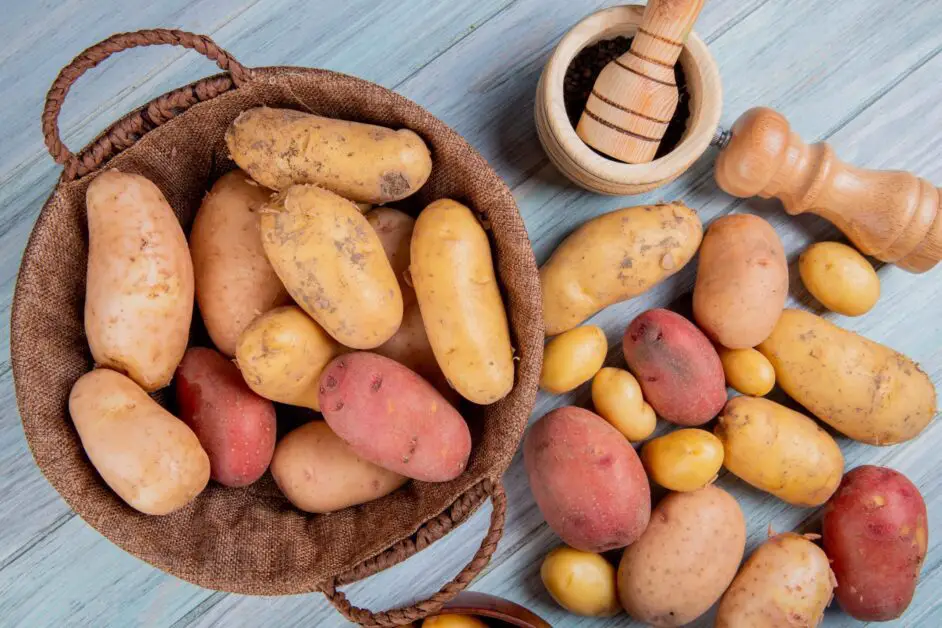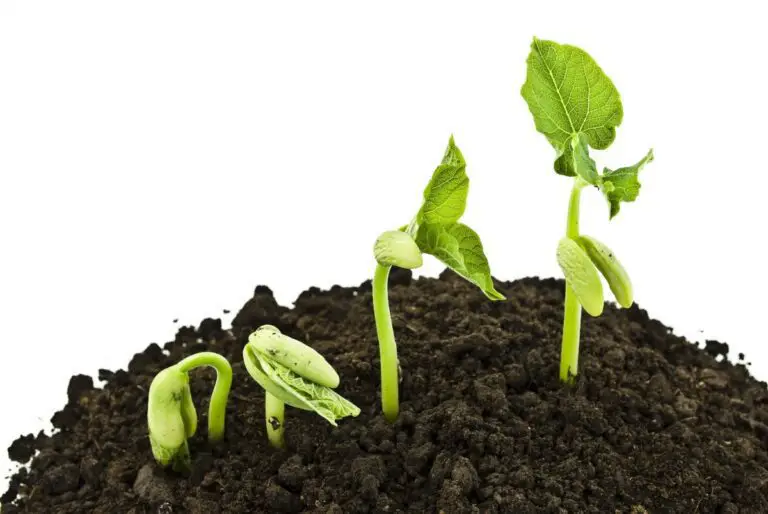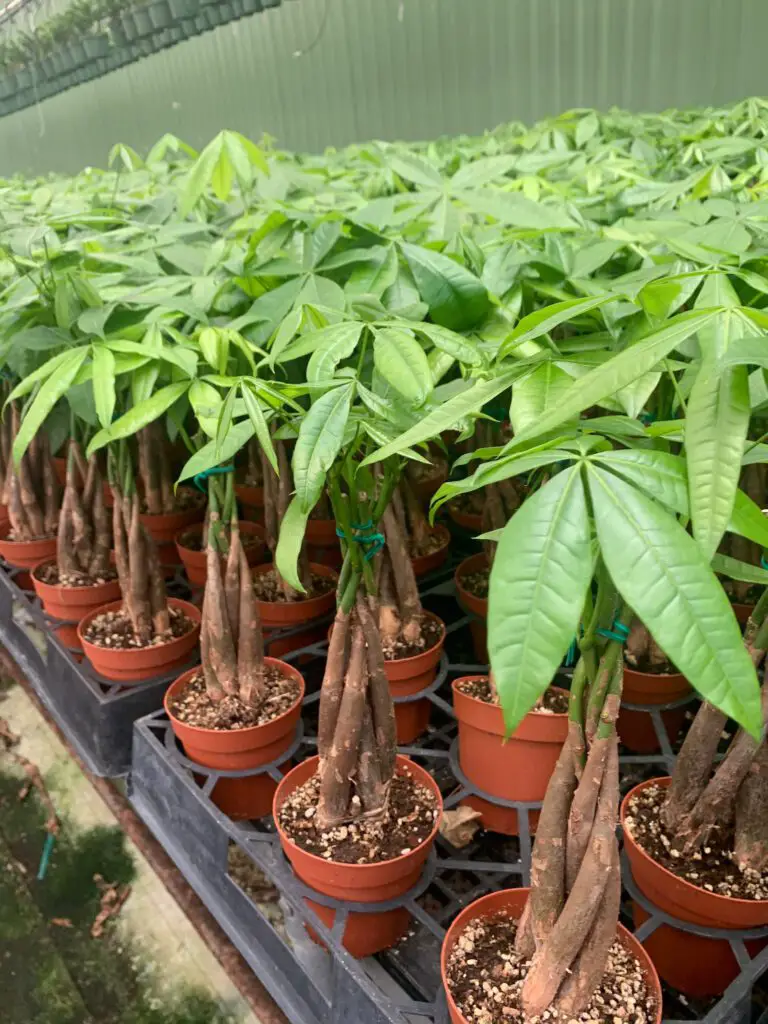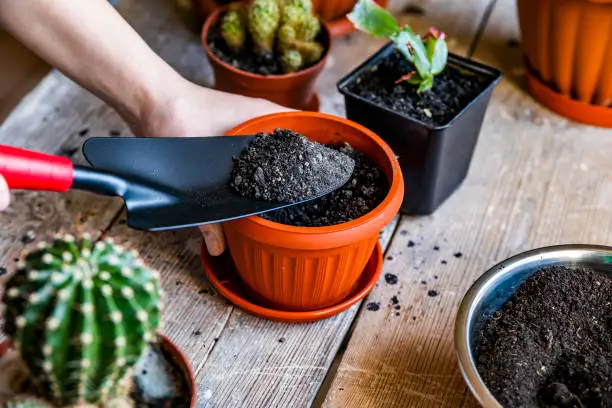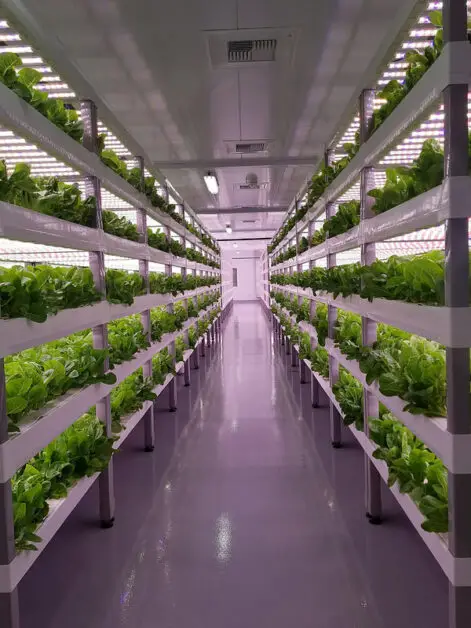Sweet Potatoes: 20 Delicious Varieties to Grow in Your Garden
Table of Contents
Understanding the Different Varieties of Sweet Potatoes
Sweet potatoes come in a variety of shapes, sizes, colors, and flavors, making them a versatile and popular choice for home gardens. Understanding the different varieties available will help you choose the perfect sweet potato for your garden and culinary preferences.
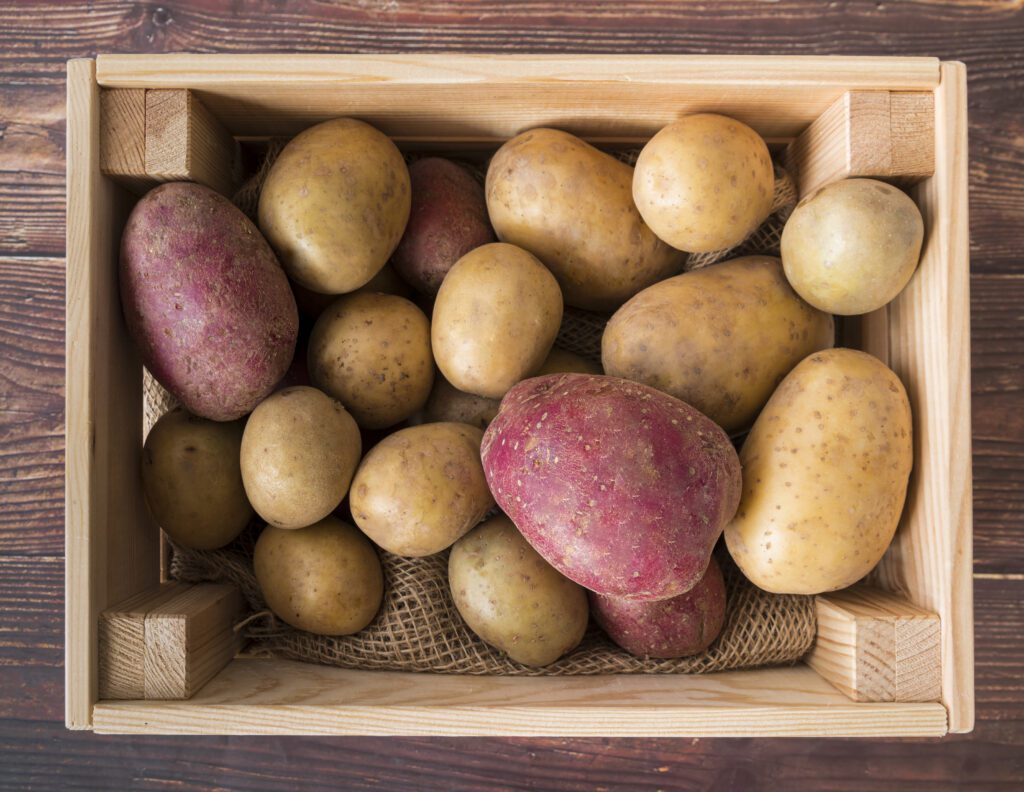
One of the most common varieties is the Beauregard sweet potato. It is known for its vibrant orange flesh and thin skin, making it easy to peel and cook. Beauregard sweet potatoes are also highly adaptable to different growing conditions, making them ideal for beginners or those with variable soil and climate conditions. They have a sweet, moist texture and are great for baking, roasting, or making delicious sweet potato fries. Another popular variety is the Garnet sweet potato. With its deep red skin and orange flesh, it adds a splash of color to any dish. Garnet sweet potatoes have a rich, sweet flavor and creamy texture, making them perfect for mashing or making sweet potato pies.
It’s important to note that there are also white flesh sweet potatoes, such as the O’Henry variety. These sweet potatoes have a creamy, mild flavor that pairs well with various seasonings and recipes. They are less sweet than their orange counterparts but still offer a delicious alternative for culinary experimentation. As you explore the different varieties, consider your gardening conditions, flavor preferences, and desired culinary uses to find the perfect sweet potato option for your garden. Stay tuned as we delve deeper into the factors you should consider before growing sweet potatoes in your garden.
Factors to Consider Before Growing Sweet Potatoes in Your Garden
Factors to Consider Before Growing Sweet Potatoes in Your Garden
When it comes to growing sweet potatoes in your garden, there are several factors that you need to consider. These factors will not only determine the success of your sweet potato plants but also the quality and yield of your harvest. One crucial factor to consider is the climate in your region. Sweet potatoes thrive in warm weather, so it’s important to ensure that your region experiences a long enough growing season with temperatures consistently above 50°F (10°C). If you live in a colder region, you might need to consider growing sweet potatoes in containers or using protective covers to create a warmer microclimate.
Another factor to consider is the soil in your garden. Sweet potatoes prefer loose, well-drained soil with a pH level of around 5.8 to 6.2. Conducting a soil test before planting can help you determine its pH level and nutrient content. If your soil is heavy clay or compacted, you can amend it by adding organic matter such as compost or well-rotted manure to improve its texture and drainage. Additionally, sweet potatoes are heavy feeders, so ensuring that your soil is rich in organic matter and nutrients like nitrogen, phosphorus, and potassium is crucial for their proper growth and development.
Consider these factors carefully before growing sweet potatoes in your garden to ensure the best possible conditions for your plants. By providing the right climate and soil conditions, you can set a solid foundation for healthy and productive sweet potato growth.
Climate and Soil Requirements for Growing Sweet Potatoes
Sweet potatoes are a versatile and nutritious crop that can be grown in a variety of climates. However, they do have specific requirements when it comes to climate and soil conditions. In terms of climate, sweet potatoes thrive in warm and temperate regions where the average temperature is between 75°F and 85°F (24°C to 29°C). They require a long growing season of about 90 to 120 days, so regions with shorter summers may not be suitable for cultivating this crop.

In addition to temperature, sweet potatoes also need plenty of sunlight to grow and develop properly. They require at least 6 to 8 hours of direct sunlight every day. Therefore, it is important to choose a location in your garden that receives full sun exposure. If you live in a region with a cooler climate or shorter summers, consider planting sweet potatoes in containers or using grow lights to provide them with the necessary amount of sunlight.
How to Choose the Right Variety of Sweet Potatoes for Your Garden
When it comes to choosing the right variety of sweet potatoes for your garden, there are several factors to consider. First and foremost, you need to assess your climate and soil conditions. Sweet potatoes thrive in warm weather and require well-drained soil. If you live in a cooler climate, you may need to consider varieties that are more cold-tolerant or opt for growing them in containers or raised beds.
Another important consideration is the intended use of sweet potatoes. Are you planning to use them for baking, roasting, or mashing? Different varieties have varying textures and flavors that can enhance your culinary creations. For example, some varieties are known for their creamy texture and sweetness, while others have a drier, starchier consistency. Researching the flavor profiles of different varieties can help you choose the perfect one for your taste preferences and cooking needs.
It is also worth noting that certain varieties of sweet potatoes are more disease-resistant than others. This can be a crucial factor to consider, especially if you are facing common sweet potato diseases in your region. Disease-resistant varieties can help mitigate the risk of crop loss and ensure a healthier harvest.
Ultimately, choosing the right variety of sweet potatoes for your garden requires careful consideration of your climate, soil conditions, intended use, and disease resistance. By taking these factors into account, you can select a variety that will thrive in your garden and provide you with a bountiful and delicious harvest.
Popular Varieties of Sweet Potatoes for Home Gardens
Sweet potatoes are a popular choice for home gardeners due to their versatility and delicious flavor. Several popular varieties of sweet potatoes are well-suited for growing in home gardens. One such variety is the Beauregard sweet potato, which is known for its outstanding yield and disease resistance. This variety produces large, reddish-orange tubers that are perfect for baking, roasting, or mashing. Another popular variety is the Covington sweet potato, which is favored for its sweet flavor and high yield. This variety produces medium-sized, rose-colored tubers that are great for a variety of culinary uses. Lastly, the Jewel sweet potato is highly sought after for its vibrant orange color and excellent taste. This variety produces medium to large tubers that are perfect for making sweet potato fries, pies, and casseroles. These popular sweet potato varieties are sure to be a delightful addition to any home garden.

When choosing which variety of sweet potatoes to grow in your home garden, there are a few factors to consider. Firstly, you should take into account your local climate and the length of your growing season. Some sweet potato varieties, like the Bonita and Porto Rico, are early maturing and can be harvested in as little as 90 days. On the other hand, there are late-maturing varieties, such as the O’Henry and Garnet, which take around 120 days to mature. Additionally, you should consider the flavor and texture of the sweet potatoes you prefer. Some varieties, like the White Delight and Japanese sweet potato, have a drier texture and a slightly nutty flavor. Others, like the Hannah and Purple sweet potato, have a more moist and buttery texture. By carefully selecting the right variety of sweet potatoes for your home garden, you can ensure a bountiful harvest of delicious and nutritious tubers.
Disease-Resistant Varieties of Sweet Potatoes to Consider
Disease-resistant varieties of sweet potatoes are essential for ensuring a successful and healthy harvest. By choosing these varieties, you can minimize the risk of common sweet potato diseases and enjoy a bountiful crop. One such variety to consider is the ‘Beauregard.’ Known for its resistance to diseases like Fusarium wilt and soil rot, the ‘Beauregard’ is a popular choice among gardeners. This variety produces high yields of sweet and flavorful potatoes, making it a favorite for both home gardens and commercial farms. Its disease resistance also reduces the need for chemical treatments, making it a more environmentally friendly option.
Another disease-resistant variety worth considering is the ‘Covington.’ This variety is highly resistant to Fusarium wilt, which is a prevalent sweet potato disease. The ‘Covington’ is known for its excellent taste and versatility in the kitchen. It produces medium-sized potatoes with reddish-orange flesh that is both sweet and moist, making it a favorite for baking, roasting, and mashing. With its disease resistance, the ‘Covington’ offers gardeners peace of mind and a reliable harvest year after year.
When choosing disease-resistant sweet potato varieties, it is important to consider factors such as taste, yield, and adaptability to your specific growing conditions. Consulting with local agricultural extension offices or seed catalogs can provide valuable information on the best disease-resistant varieties for your region. By selecting these varieties, you can minimize the risk of crop loss and enjoy a successful sweet potato harvest.
High-Yielding Varieties of Sweet Potatoes for Maximum Harvest
High-yielding varieties of sweet potatoes are essential for gardeners who are looking to maximize their harvest. These varieties are specifically cultivated to produce a larger quantity of sweet potatoes, providing gardeners with an abundance of nutritious and delicious tubers to enjoy. By selecting the right high-yielding variety for your garden, you can ensure a bountiful harvest that will keep you well-stocked with sweet potatoes throughout the growing season.
One popular high-yielding variety is the Covington sweet potato. Known for its exceptional productivity, the Covington variety consistently produces a large number of uniform-sized sweet potatoes. With its orange flesh and sweet flavor, it is a favorite among gardeners and consumers alike. Another high-yielding variety is the Beauregard sweet potato, which has gained popularity for its high yields and excellent flavor. Its deep orange flesh and distinctive sweetness make it a great choice for both culinary use and storage. By opting for these high-yielding varieties, you can increase your sweet potato production and enjoy the fruits of your labor to the fullest.
• The Covington sweet potato variety is known for its exceptional productivity and consistently produces a large number of uniform-sized sweet potatoes.
• The Beauregard sweet potato variety has gained popularity for its high yields and excellent flavor.
• Both varieties have orange flesh and offer a sweet taste, making them favorites among gardeners and consumers alike.
• These high-yielding varieties are great choices for culinary use as well as storage purposes.
• By selecting these varieties, gardeners can increase their sweet potato production and enjoy a bountiful harvest throughout the growing season.
Early Maturing Varieties of Sweet Potatoes to Enjoy Sooner
Early maturing varieties of sweet potatoes are a great choice for gardeners who can’t wait to enjoy the delicious and nutritious tubers sooner rather than later. These varieties have a shorter growing season compared to other sweet potato types, allowing you to harvest them earlier and savor their flavors. One popular early maturing variety is the Georgia Jet, known for its exceptional taste and vibrant orange flesh. This variety matures in around 90 days, making it perfect for gardeners in cooler climates or those who want a quick harvest.
Another early maturing variety worth considering is the Beauregard. This variety is not only known for its shorter growing time of around 90-100 days but also its excellent disease resistance and high yields. The Beauregard sweet potato features a deep, orange flesh that is sweet, flavorful, and perfect for a variety of culinary preparations. Its reliable and consistent performance has made it a favorite among gardeners and commercial growers alike.
When choosing an early maturing variety of sweet potatoes, it is essential to consider your specific growing conditions, such as climate and soil type. Some varieties may perform better in certain regions, while others are more adaptable and can thrive in various environments. By carefully selecting the right early-maturing sweet potato variety for your garden, you can ensure a bountiful harvest that satisfies your taste buds earlier in the season.
Late Maturing Varieties of Sweet Potatoes for Extended Harvest
Late-maturing varieties of sweet potatoes are an excellent choice for those looking to extend the harvest season and enjoy a bountiful supply of this delicious root vegetable. These varieties typically take a longer time to mature, but the wait is worth it as they offer numerous advantages. One such advantage is their ability to grow larger, providing you with substantial yields and plenty of sweet potatoes to enjoy for an extended period.
In addition to their generous size, late-maturing varieties boast a longer storage life compared to their early-maturing counterparts. This is particularly beneficial for those who wish to store their harvested sweet potatoes for long-term use. With proper curing and storage techniques, these varieties can last for several months, ensuring a fresh supply of sweet potatoes during the winter months when other crops may be scarce.
Noteworthy late-maturing varieties include the Covington, Beauregard, and Georgia Jet, each offering its unique characteristics and flavor profiles. The Covington, for instance, is highly sought after for its exceptional taste, smooth texture, and reliable yields. On the other hand, the Beauregard is known for its deep orange flesh, excellent flavor, and resistance to diseases such as fusarium wilt. Meanwhile, the Georgia Jet variety impresses with its quick maturity rate, making it a great choice for gardeners in cooler climates with shorter growing seasons.
When selecting a late-maturing variety for your garden, consider factors such as your climate, preferred taste, yield expectations, and storage requirements. By doing so, you can make an informed decision and enjoy an extended harvest of delicious sweet potatoes.
Ornamental Varieties of Sweet Potatoes to Add Beauty to Your Garden
Ornamental varieties of sweet potatoes are not only delicious and nutritious, but they also add aesthetic appeal to your garden. With their vibrant colors and striking foliage, these varieties can be grown purely for their visual impact. One such variety is the Blackie Sweet Potato, which features deep purple leaves that create a dramatic contrast against greenery or other flowers in the garden. The dark foliage of this variety is not only eye-catching, but it also provides a beautiful backdrop for the bright orange or white sweet potatoes that grow beneath the soil.
Another ornamental sweet potato variety that adds beauty to your garden is the Margarita Sweet Potato. This variety boasts lime green leaves that add a refreshing burst of color to any landscape. The chartreuse foliage of Margarita provides a stunning contrast when grown alongside other plants with darker shades. Additionally, the Margarita Sweet Potato produces tubers with a subtle orange hue, making them not only visually appealing but also a tasty addition to your harvest.
Sweet Potatoes with Unique Flavors and Textures to Try
When it comes to sweet potatoes, there is a wide range of varieties available, each with its own unique flavors and textures. If you’re a gardening enthusiast looking to explore different tastes and experiences, trying sweet potatoes with unique flavors and textures can be an exciting journey.
One such variety to consider is the Japanese sweet potato. Known for its reddish-purple skin and creamy white flesh, this sweet potato offers a nutty and earthy flavor that is often described as rich and sweet. Its texture is smooth and slightly dense, making it a great choice for both savory and sweet dishes. From roasted wedges to mashed potato casserole, the Japanese sweet potato adds a distinct flavor and velvety texture to any recipe.
Another intriguing option is the Stokes Purple sweet potato. With its vibrant purple skin and vibrant purple flesh, this variety is not only visually appealing but also offers a unique taste. Stokes Purple sweet potatoes have a subtly sweet and mildly nutty flavor, with a creamy and moist texture. They are commonly used in both sweet and savory dishes, from pies and muffins to fries and mashed potatoes. Adding a pop of color and a delightful flavor, Stokes Purple sweet potatoes are a must-try for culinary enthusiasts looking for something a little different.
Tips for Planting and Caring for Sweet Potato Varieties in Your Garden
When it comes to planting and caring for sweet potato varieties in your garden, there are a few important tips to keep in mind. First, it’s crucial to choose the right location for your sweet potatoes. These plants thrive in warm climates, so make sure to select a spot with full sun exposure. Additionally, sweet potatoes prefer well-drained soil with a pH level between 5.8 and 6.2, so it’s advisable to test your soil and make any necessary amendments before planting.
Once you have the perfect spot, it’s time to prepare the soil. Sweet potatoes benefit from loose, friable soil that allows for good root development and water drainage. Remove any rocks or debris and incorporate organic matter such as compost or aged manure to improve soil quality. It’s also a good idea to add a balanced fertilizer with a 5-10-10 or 8-8-8 NPK ratio to provide essential nutrients to the plants.
To ensure proper spacing, plant your sweet potato slips, which are young plants produced from the mature tubers, about 12-18 inches apart in rows that are 3-4 feet apart. Dig a hole deep enough to accommodate the length of the slips, burying them up to the first set of leaves. As the plants grow, it’s important to regularly weed the area around them to prevent competition for nutrients and water. Additionally, sweet potatoes require consistent irrigation, so make sure to water them deeply and evenly.
In the next section, we’ll discuss some important considerations for the successful harvest and storage of sweet potatoes in your garden.
Harvesting and Storing Sweet Potatoes for Long-Term Use
Harvesting and storing sweet potatoes properly is crucial if you want to enjoy their delicious flavor and nutritious benefits for an extended period. When it comes to harvesting, timing is key. Unlike regular potatoes, sweet potatoes should not be left in the ground until the first frost. Instead, they need to be dug up before the temperature drops below 55°F (12°C) to prevent damage.
To start the harvesting process, gently loosen the soil using a fork or shovel, being careful not to puncture or bruise the sweet potatoes. Once the soil is loosened, carefully lift the sweet potatoes out of the ground, being mindful of their delicate skins. Avoid yanking or pulling forcefully, as this can cause damage. After harvesting, allow the sweet potatoes to dry for a few hours in a cool, dry location to ensure proper curing.
Storing sweet potatoes correctly is crucial to maintain their freshness and quality. Ideally, sweet potatoes should be stored at a temperature of 55-60°F (13-15°C) with a humidity level of 75-80%. Choose a storage area that is cool, dark, and well-ventilated. Avoid placing sweet potatoes in the refrigerator, as the cold temperature can negatively affect their flavor and texture.
Before storing, inspect each sweet potato carefully, discarding any damaged or bruised ones. It’s essential to keep them separate from other fruits and vegetables, as sweet potatoes emit ethylene gas, which can hasten spoilage in nearby produce. To maximize their shelf life, store sweet potatoes in slatted crates or on shelves, rather than in plastic bags or containers that can trap moisture and promote rot.
By following these guidelines for harvesting and storing sweet potatoes, you can ensure that your homegrown treasures stay fresh and delicious for months to come, providing a bountiful supply of sweet and nutritious meals throughout the year.
Delicious Recipes to Make with the Sweet Potatoes from Your Garden
When it comes to sweet potatoes from your garden, the possibilities for delicious recipes are endless. Whether you prefer savory or sweet dishes, there are numerous ways to highlight the natural sweetness and versatility of these lovely tubers. One option is to roast them with a drizzle of olive oil and a sprinkle of herbs such as rosemary or thyme. This simple preparation brings out the natural caramelization of the sweet potatoes, resulting in a crispy and flavorful side dish. Alternatively, you can mash the cooked sweet potatoes with a touch of butter and a splash of milk for a creamy and comforting side dish that pairs perfectly with roasted meats or a Thanksgiving feast. The smooth texture and subtle sweetness of the mashed sweet potatoes are sure to please even the pickiest eaters.
for more details check the vedio given below:
How do I know which variety of sweet potatoes to choose for my garden?
To choose the right variety, consider factors such as climate and soil requirements, disease resistance, yield, maturing time, and flavor and texture preferences.
Are there any disease-resistant varieties of sweet potatoes available for home gardens?
Yes, there are disease-resistant varieties available, which can help minimize the risk of common sweet potato diseases.
Which sweet potato varieties are known for high yields?
Some sweet potato varieties are known for their high yields, ensuring you get a bountiful harvest. These varieties are worth considering for maximum productivity.
Are there any early-maturing sweet potato varieties that can be harvested sooner?
Yes, there are early-maturing sweet potato varieties available that allow you to enjoy your harvest sooner than other varieties.
Are there any late-maturing sweet potato varieties that extend the harvest season?
Yes, there are late-maturing sweet potato varieties that take longer to mature but offer an extended harvest season, allowing you to enjoy fresh sweet potatoes for a longer period.
Can sweet potatoes be grown for their ornamental value?
Yes, there are ornamental varieties of sweet potatoes that can add beauty to your garden with their vibrant foliage, making them a great choice for both aesthetics and culinary purposes.
Are there any sweet potato varieties that offer unique flavors and textures?
Yes, there are sweet potato varieties available with unique flavors and textures, providing a delightful twist to your recipes.
What are some tips for planting and caring for sweet potato varieties in my garden?
Some tips for planting and caring for sweet potato varieties include proper spacing, watering, fertilizing, and protecting the plants from pests and diseases.
How do I harvest and store sweet potatoes for long-term use?
To harvest sweet potatoes, gently dig them out of the soil, handle them carefully to avoid bruising, and cure them before storing in a cool, dry place for long-term use.
Can you provide some delicious recipes to make with sweet potatoes from my garden?
Certainly! Here are a few delicious recipes you can make with the sweet potatoes harvested from your garden.

Kanike Sreekanth, a prolific writer at SouthElMonteHydroponics, brings a unique blend of creativity and scientific rigor to the table. With a degree in Horticulture from a prestigious institution, Kanike’s expertise spans hydroponic farming, plant biology, and agricultural sustainability. Their passion for exploring innovative cultivation methods and promoting environmental stewardship drives them to uncover new insights in the realm of hydroponics. Kanike’s writing serves as a conduit for sharing their knowledge and inspiring others to embrace alternative farming practices for a more sustainable future.

